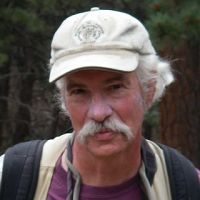Dethier & Lazarus, 2006
Geomorphic inferences from regolith thickness, chemical denudation and CRN erosion rates near the glacial limit, Boulder Creek catchment and vicinity, Colorado.
Dethier DP, Lazarus ED (2006)
Geomorphology 75: 384-399.
-
Boulder, INVESTIGATOR
Abstract
Granitic regolith, developed in the Boulder Creek catchment and adjacent areas, records a history of deep weathering, some of which may predate Quaternary time. Field and well-log measurements of weathering, chemical denudation and rates of erosion derived from 10Be cosmogenic radionuclide (CRN) data help to quantify rates of landscape change in the post-orogenic Rocky Mountains. The density of oxidized, fractured bedrock ranges from 2.7 to about 2.2 g cm− 3, saprolite and grus have densities between ∼2.0 and 1.8 g cm− 3, and 30 soil samples averaged 1.6 ± 0.2 g cm− 3. Highly weathered regolith in ∼540 wells averages ∼3.3 m thick, mean depth to bedrock in 1661 wells is ∼7 m, and the weathered thickness exceeds 10 m in relatively large local areas east of the late Pleistocene glacial limit. Thickness of regolith shows no simple relationship to rock type or structure, local slope, or distance from channels. Catchments in the vicinity of the Boulder Creek have an average CRN erosion rate of 2.2 ± 0.7 cm kyr− 1 for the past 10,000 to 40,000 yr. Annual losses of cations and SiO2 vary from about 2 to 5 g m− 2 over a runoff range of 10 to nearly 160 cm.
Using measured rates in simple box models shows that if a substantial fraction of void space is created by volume expansion in the weathering rock materials, ∼7 m of weathered rock materials could form in as little as 230 kyr. If density loss results mainly from chemical denudation and some volume expansion, however, the same weathering profile would take > 1340 kyr to form. Rates of erosion measured by CRN could be balanced by the rate of soil formation from saprolite if the annual solute loss from soil is 2.0 g m− 2 and 70% of the density decrease from saprolite to grus and soil results from strain. Saprolite, however, forms from oxidized bedrock at a far slower rate and rates of saprolite formation cannot balance soil and grus losses to erosion. The zone of thick weathered regolith is likely an eroding relict landscape. The undulating surface marked by relatively low relief and tors is not literally a topographic surface of Eocene, Oligocene or Miocene age unless it was covered with deposits that were removed in Pliocene or Quaternary time.
Citation
Dethier DP, Lazarus ED (2006): Geomorphic inferences from regolith thickness, chemical denudation and CRN erosion rates near the glacial limit, Boulder Creek catchment and vicinity, Colorado. Geomorphology 75: 384-399.. DOI: 10.1016/j.geomorph.2005.07.029
Explore Further

